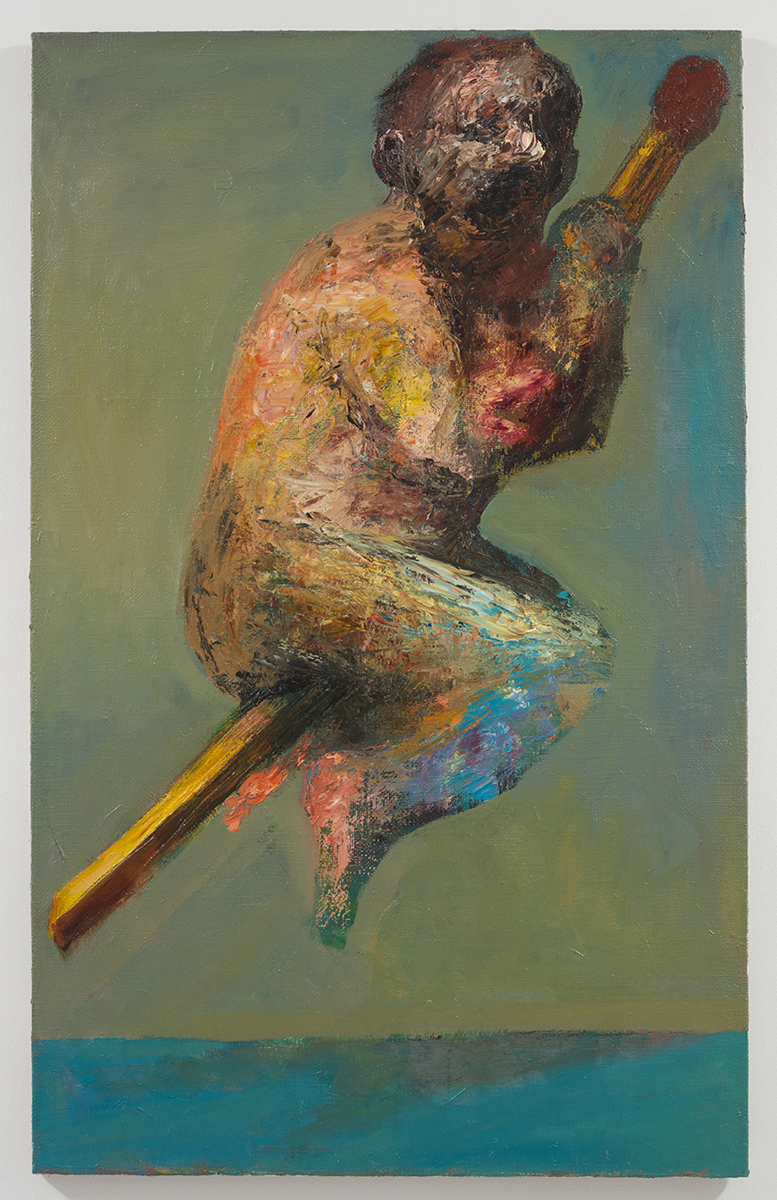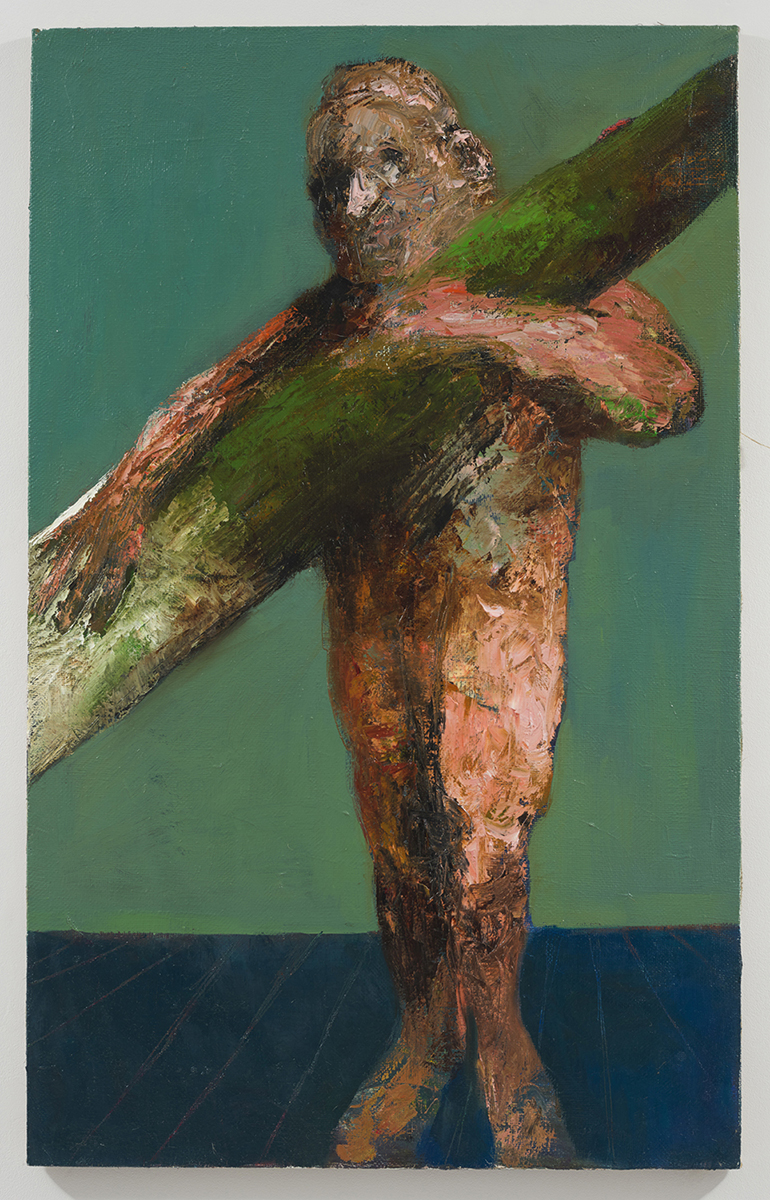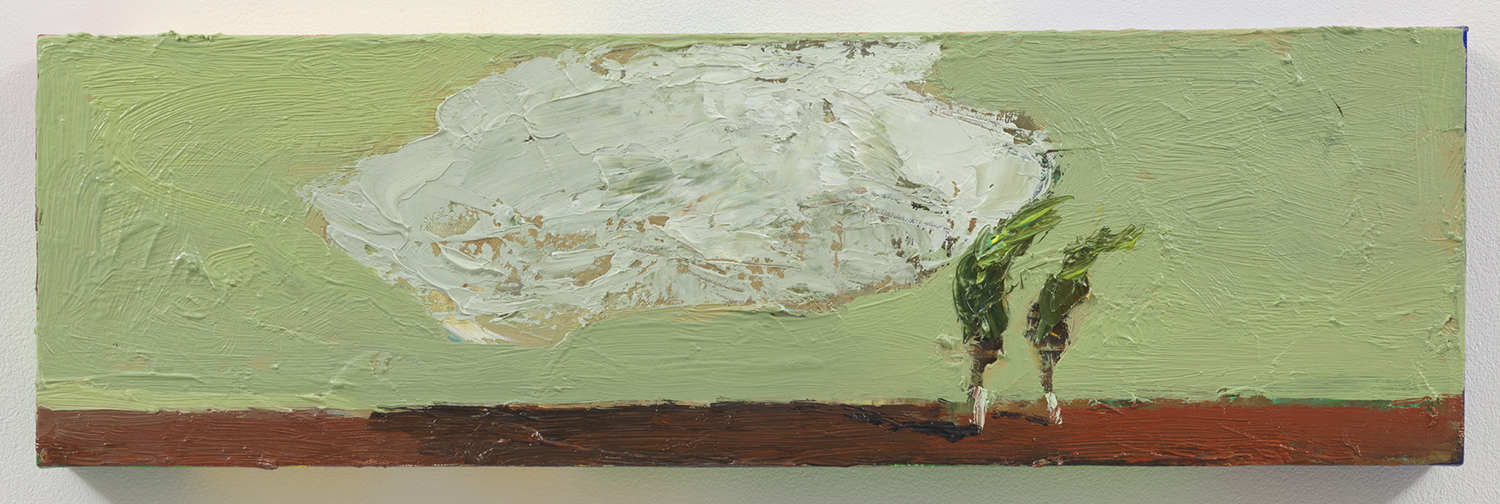Shows
Niyaz Najafov’s “Absorb, Adhere, Advance”


Azeri artist Niyaz Najafov has been touted as the next Francis Bacon, and in many ways the comparison is apt. Najafov, like Bacon, is self-taught. Having worked as a professional hand-to-hand fighter, a soldier in the Soviet army, and later a policeman, he first experimented with oil paints in 2003 at the age of 35, and was selected to represent his country at the 53rd Venice Biennale only six years later. The works of both artists reveal a flair for the grotesque, but differ in their treatment and expression of it. The scenes in Bacon’s paintings are the stuff of nightmares—images made phantasmagorical by the oil soaking into his unprimed canvases. Najafov’s short brush strokes and broken-color impasto lend his fictional subjects physical substance—his scenes feel not so much like nightmares, but more like grim realities.
This said, despite Najafov’s somber palette and occasionally morbid imagery, he appears to carry what French philosopher Gilles Deleuze called Bacon’s “cerebral pessimism” and “nervous optimism”—an outlook where the artist “believes only in life.” The solidity and presence of the Azeri painter’s figures make this palpable. His characters are relatable in their strange, splotchy fleshiness and vulnerable postures, but are most powerful in paintings where they interact with objects. In Present (2016), a squat character cups a white flower, offering it meekly to some figure or force beyond the canvas; in Monuments (2014), a thin body of unmixed streaks of green, red and orange paint leans upside-down and absurdly straight against a truncated pillar. At first the scene is awkward and comical, but farce quickly dissolves into tragedy as the pain in his torturous pose emanates from the canvas.

Scale is also significant here. Matches (2015) has one of Najafov’s plump, semi-abstracted figures riding a matchstick as an animated witch might straddle a broom, and in Sabbatarian (2016) a man clings to a branch whose thickness has him appear childlike. These small, ugly men grasp at their objects as a child might the leg of his mother, afraid she might leave him behind. There is a deep, troubled tenderness to the images that belies—or perhaps reflects—a life intermingled with violence. Even the canvases that depict violent acts, as with the wrestling men of Scramble 1 (2014–16), are imbued with human frailty. Here, their fighter’s grip is made folly by what appears to be a pile of cartoonishly pyramidal excrement—a motif that also appears elsewhere—waiting beneath one of their feet.
Also on display was a selection of landscapes, in which Najafov is equally adept at provoking profound and visceral feelings without depicting people. Park (2012–17) shows a collection of trees composed with crude depth and shadow. They are compelling in their simple, dark colors, but the work’s true power emerges as the eye wanders upward to their canopy, where viscous streaks of yellow could as easily represent the blazing light of an autumn sunset as raging flames tearing through the leaves. The show’s most delicate image was a further depiction of trees subject to natural forces, which recurred in several paintings, for instance in Sex and Sex at Night (both 2016). In each of these, two trees bend together in a breeze—both in the same direction and thus never any closer together—while a single white cloud floats above or between them, marking the passage of time, a party to their solitude.


One wall of the gallery featured a display of small flower paintings representing a “social art” project that Najafov has been undertaking since 2016. He paints flowers onto pieces of paper or card he has found before sticking them onto various street corners in Paris, where he currently lives and works, allowing people to view them, remove them, and eventually move on from them. In places, the cards’ original texts show through the paint, betraying their humble origins. Like the flower offered by the unattractive yet relatable figure in Present, these beautified objects from the gutter are gifts given in earnest. Najafov’s true gift, however, is his playful, affectionate and shamelessly corporeal insight into the folly and frailty of human beings.
Niyaz Najafov’s “Absorb, Adhere, Advance” is on view at Gazelli Art House, London, until June 3, 2017.







